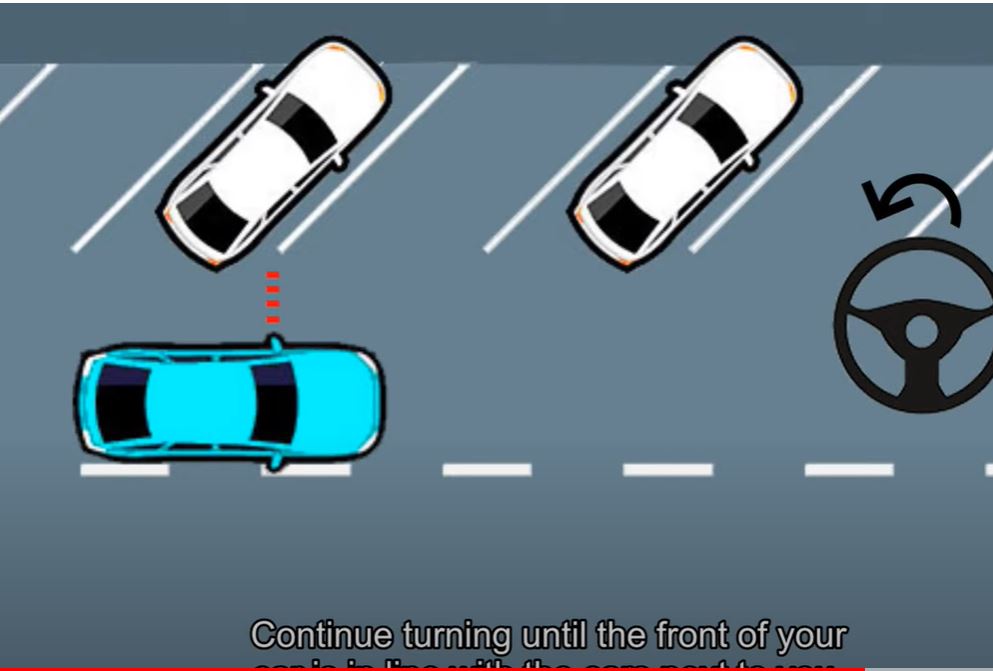Angle Parking – How to Angle Park Perfectly
Parking is always considered a great challenge for new drivers. There are three corrected parking situations that are angle parking, perpendicular parking and parallel parking. This article will summarize methods for angle parking.

Parking is always considered a great challenge for new drivers. There are three corrected parking situations that are angle parking, perpendicular parking and parallel parking. This article will summarize methods for angle parking.
Angle parking technique – Park the car across the corner
The first step is to determine the parking position. Priority should be given to locations where there are few vehicles around to easily put the car in the parking space. Once you have made your choice, you need to bring your vehicle to the correct position, away from other vehicles and within a suitable distance from the parking space so you can rotate the steering wheel correctly. Ensure the distance between your vehicle and other parked vehicles is at least 1.5 – 1.8 m.
In mid-size vehicles, the outside edge of the rearview mirror hits the edge of the “cage” first when you should steer. If the car is longer, drive earlier and vice versa. Because the cage is diagonal, you only need to turn the steering wheel one round to bring the car in. After entering the cage, return the driver and keep the front of the car close to the edge, then stop.
Look for a parking spot where there are not many cars around. It is easier to practice parking with less obstacles around.
During practice, you should look for a parking space that doesn’t have many cars.
Since you are learning how to park your car, it is easy to make mistakes.
With an empty area, you can hardly bump into anything while forging this skill.
This is not just a good idea for those who are learning to drive. If you haven’t been driving for a while, take some time to practice parking and driving before each long trip.
Take the car to the correct position
You need to take your car to the correct position, away from other vehicles and a good distance from the parking space so you can turn the steering wheel correctly.
Ensure the distance between your vehicle and other parked vehicles is at least 1.5 – 1.8 m.
If there are no vehicles in the nearby space then you approximate this distance from them.
This is the right distance so that when you park your car, you can turn the steering wheel precisely in the remaining steps.
Turn on your lights when you find a parking space
Your signal lights will alert other drivers that you are planning to park. Drive slowly forward until you see the center line of the parking space.
Watch out for other vehicles. Do not choose where people are already waiting to run.
Make sure no one is backing out at a nearby location while you are approaching.
Turn the steering wheel firmly when you see the center line of the parking space
Make sure the vehicle is located 1.5 – 1.8 meters away from other vehicles or another open space when you start to turn the steering wheel.
You should rotate the steering wheel about half a turn.
Make sure there are no trolleys or other objects in the parking space.
Enter the parking space at a slow speed. Stop completely when the vehicle is completely parked.
Make sure the car is completely in the parking position to avoid being fined by the police.
Straighten the wheel when the car has stopped.
You should turn the wheels straight so you can back out in a straight direction.
You can also straighten the wheel just before preparing to reverse.
However, it’s best to turn the wheels straight when you first park.
This angle parking technique that is almost the same as 90-degree parking, but easier because the angle is wider, easier to align. Depending on the vehicle, the driver can determine where to go, start driving to enter the parking position, often when the mirror with the same near line of the parking bar starts hitting.
Subscribe for new driving tips!